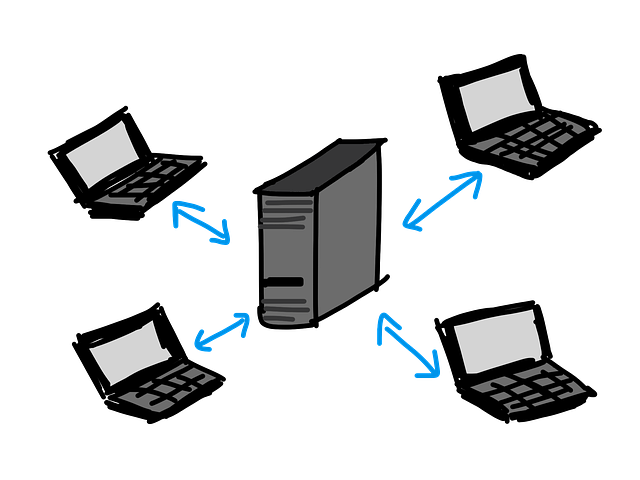Binding is an essential process for ensuring that your program runs correctly on any computer, no matter the operating system or platform. By tying code and data together with libraries through this simple yet powerful technique, you can make sure all components work seamlessly when running complex multi-file programs – a crucial step in developing reliable software!
This blog post will discuss binding, its essentials, and how to do it effectively.
What is binding, and why is it important in programming languages?
When it comes to programming, data binding is an integral part of what helps applications and infrastructure work correctly. It’s a data-binding library that allows data from multiple input sources, such as user interfaces and cloud computing services, to interact with data in a programming language like Java.
Data binding allows data to keep its integrity across the codebase; changes made in one module are reflected among all application parts. By leveraging data-binding libraries, businesses are able to effortlessly access and modify their information – eliminating manual programming labor while maintaining secure storage. This allows for accurate, real time usage of the data across networks and applications which helps make efficient use out of its various purposes.
How can you bind your code to libraries in different languages like C++, Java, and Python?
Writing application code in languages like C++, Java, and Python can get complicated when you bind your code to the libraries you need. Taking advantage of java code or relying on a data-binding library are two ways to save time and effort and access the most up-to-date tools that help make your project successful.
Cloud computing services can also help create and integrate complex software designs with different platforms, languages, devices, and hardware. Utilizing these services regularly will make your code easier to manage as it’s written into new applications.
What are the benefits of binding your code to libraries?
Data binding libraries, such as those connected to cloud computing services, provide many advantages compared to traditional static or dynamic linking methods. Using data-binding libraries allows code to be more easily shared and updated across different systems, making applications instantly available from any location.
Furthermore, data-binding libraries have unique properties that enable data to be dynamically generated upon demand without reloading an entire data set. This can be particularly advantageous for developers who need to make real-time changes in data or information with multiple users accessing it at once.
Additionally, data binding libraries are typically more straightforward and quicker to modify than other link types because rich data sets are knit together rather manageably separately than opening up the whole code base.
In short, data binding provides a convenient and efficient way of developing applications while taking advantage of all the features and benefits of cloud computing services.
Examples of how to implement data binding library
Data binding library implementations typically involve the creation of a client-side framework that links to the server-side application via an API. This simple interface allows for easy integration of objects and data across the entire technology stack.
To implement data binding libraries, developers need to create models that define the structure and format of their data and view components that will render and display them on web pages or mobile applications.
Developers should also utilize custom tags, attributes, or directives defined in markup languages, such as HTML or XML, to effectively bind data from models to views.
Finally, developers should use JavaScript frameworks like React or AngularJS, and AJAX calls to make asynchronous requests for dynamic page content updates without reloading the page.
Following these steps, developers can easily integrate data-binding libraries into their projects.
Data-binding libraries can also be used to improve the performance of an application by reducing the amount of code required for a given task. For example, instead of manually writing loops every time data is retrieved or displayed, developers can use data binding libraries like React to automatically generate HTML elements that display content based on user inputs. This ensures that only relevant information is being requested and processed in a fraction of the time it would take if done manually.
Data binding libraries are also helpful when working with databases as they allow developers to query them quickly and get up-to-date results without needing to write lengthy SQL statements each time. They can also reduce app development time significantly by allowing developers to bind different parts of their UI components together with minimal effort.
Are there any drawbacks to using library binding?
Library binding can be an incredibly useful asset for storing information, offering access to files from virtually any device. When considering cloud storage as a viable option, it is important to be mindful of potential costs associated with increased usage and multiple users. Security breaches are also a risk that could potentially expose sensitive data, so the right measures must be taken when selecting virtual machines which may have restrictions set by providers.
Protecting data is paramount when utilizing cloud computing and library resource binding. Taking precautionary steps to ensure these related technologies are managed securely will grant peace of mind that your information remains safe.
How can you ensure that your code is properly bound?
Virtual machines and physical data centers are vital to ensuring your code is correctly bound to the correct library versions when dealing with multiple libraries in a project.
Virtual machines are handy as they allow developers to create virtual “containers” to test their code. At the same time, the libraries remain consistent, but virtual machines let developers transfer those virtual containers to physical data centers. Having those virtual machines backed up against physical hardware, and network infrastructure also mitigates any risks associated with developing on a virtual machine alone – because virtualization isn’t perfect! Utilizing virtual machines and physical data centers together allows for redundancy and sequence control meaning developers can rest assured that their code will be properly bound to the correct library versions every time without fail.
What common issues can occur when binding code to libraries, and how can you troubleshoot them effectively?
Binding code to libraries can be tricky, often requiring extra attention and care. Data binding library problems are among the most common issues when attaching Java code to cloud resources such as Google Cloud Platform. Data must be structured in particular ways for integration to run smoothly.
Additionally, a data machine learning library might have data requirements that prevent correct interpretation or need extra configuration steps for a successful binding process.
To troubleshoot such issues properly, knowing any data requirements from each party involved is essential as studying documentation closely. Investing time researching potential solutions or debugging errors will save time and effort in the long run.
Another common issue associated with data-binding libraries is understanding the various technologies and services that must be integrated. Integrating various cloud computing services, such as Google Cloud Platform or Amazon Web Services, requires a thorough understanding of how the different technologies interact.
Additionally, ensuring the code is bound to the library and adheres to best practices for those services can help prevent configuration issues. Troubleshooting these issues may require consulting experts in the respective domains or reading up on specific details related to the underlying hardware and services being used within your project. Keeping updated knowledge about new technologies to identify and resolve problems quickly is essential.







